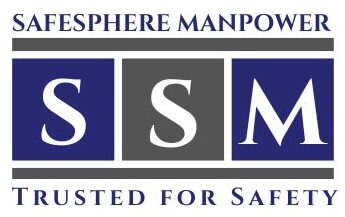
Security Management at Commercial Establishments
Access Control
Secure Entrances and Exits: Implementing secure entry and exit points with security personnel to monitor and control access.
Employee Identification Systems: Using ID badges, key cards, or biometric systems for employees to ensure only authorized personnel access certain areas.
Visitor Management: Employing electronic visitor management systems to log and verify guests, including issuing temporary access cards or badges.
Surveillance Systems
CCTV Cameras: Installing CCTV cameras at strategic locations such as entrances, exits, hallways, and high-traffic areas to monitor and record activities.
Remote Monitoring: Offering remote surveillance services where security personnel can monitor the premises 24/7.
Video Analytics: Utilizing advanced video analytics to detect unusual activities and trigger alerts in real-time.
On-Site Security Personnel
Uniformed Guards: Deploying uniformed security guards to provide a visible security presence and deter potential threats.
Plainclothes Security: Utilizing plainclothes security personnel to monitor activities discreetly and blend in with employees and visitors.
Reception Security: Placing security personnel at reception areas to manage access and assist with visitor management.
Alarm Systems
Intrusion Alarms: Installing alarms on doors and windows to detect unauthorized entry after hours.
Panic Buttons: Providing employees with panic buttons to alert security personnel in case of an emergency.
Smoke and Fire Alarms: Ensuring that smoke detectors and fire alarms are installed and maintained regularly.
Perimeter Security
Fencing and Barriers: Erecting high fences or barriers around the property to prevent unauthorized access.
Motion Sensors: Installing motion sensor lights around the perimeter to deter intruders.
Secure Access Gates: Implementing electronic or manual gates with security guards to manage entry points effectively.
Internal Security Measures
Secure Storage: Providing secure storage solutions for sensitive documents, valuable assets, and proprietary information.
Access Control for Sensitive Areas: Restricting access to sensitive areas such as server rooms, data centers, and executive offices.
Lockdown Procedures: Developing and implementing lockdown procedures in case of security threats or emergencies.
Emergency Response
First Aid Training: Ensuring that security personnel are trained in first aid and can respond to medical emergencies.
Emergency Evacuation Plans: Developing and practicing emergency evacuation plans for employees and visitors.
Fire Safety Measures: Installing fire extinguishers and ensuring clear access routes for emergency services.
Parking and Traffic Management
Secure Parking Areas: Providing secure parking areas with controlled access and regular patrols.
Traffic Flow Control: Implementing measures to control traffic flow within the establishment, including speed bumps, signs, and designated pathways.
Visitor Parking: Managing designated visitor parking areas and ensuring they are used appropriately.
Technology Integration
Smart Building Integration: Integrating security systems with building management technology for enhanced monitoring and control.
Mobile Apps: Providing mobile apps for employees to receive security alerts, request assistance, and monitor surveillance footage.
Intercom Systems: Installing intercom systems for secure communication between employees and security personnel.
Personnel Training and Management
Professional Training: Ensuring that all security personnel undergo rigorous training in areas such as conflict resolution, emergency response, and customer service.
Regular Drills: Conducting regular security drills to keep personnel prepared for various scenarios.
Performance Monitoring: Implementing performance monitoring systems to ensure high standards of security service.
Cybersecurity Measures
Network Security: Implementing robust network security protocols to protect against cyber threats.
Data Protection: Ensuring the secure storage and handling of sensitive data, including encryption and access controls.
Employee Awareness Programs: Conducting regular training sessions to educate employees about cybersecurity best practices.
Loss Prevention
Retail Security: Implementing measures to prevent shoplifting and internal theft in retail environments.
Inventory Management: Using advanced inventory management systems to track and secure stock.
Theft Deterrence: Employing undercover security personnel and electronic article surveillance (EAS) systems.
Vendor and Contractor Management
Credential Verification: Checking and verifying the credentials of vendors, contractors, and delivery personnel.
Access Control for Contractors: Managing and monitoring contractor access to ensure they adhere to security protocols.
Background Checks: Conducting background checks on all third-party personnel who require access to the premises.
Risk Assessment and Contingency Planning
Threat Assessment: Conducting thorough risk assessments to identify potential security threats and vulnerabilities.
Contingency Plans: Developing detailed plans for various emergency scenarios, including natural disasters, security breaches, and health emergencies.
Security Drills: Performing security drills and simulations to prepare staff and security personnel for potential incidents.
